It’s not every day you get to stay in a World Heritage Site. As of March 2020, we’ve visited over 500 World Heritage Sites, but aside from large cities where the entire downtown is part of a World Heritage Site, we’ve only ever stayed in one: Haeinsa Temple. So what is Haeinsa Temple? Where is it? Why is it a World Heritage Site? And most importantly, how can you do a Haeinsa Temple stay?
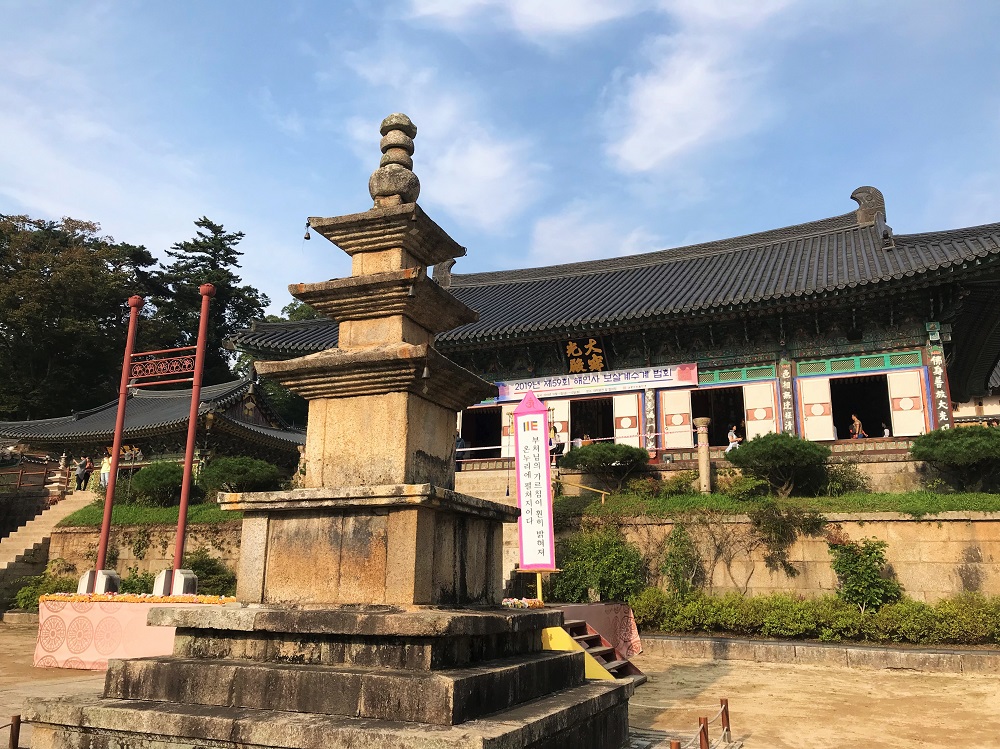
About Haeinsa Temple
Haeinsa Temple was founded in the 9th century AD. It’s located in a remote mountain area of southern Korea, a couple of hours from the city of Daegu. It’s a wonderful, remote location, surrounding by forested mountain peaks and bubbling streams. But despite the isolation, it’s still Korea’s busiest and most important Buddhist shrine.
Why is it a World Heritage Site?
Although Haeinsa Temple is beautiful, important and impressive, that’s not actually why it’s on the World Heritage List. On a plateau at the back of the temple, separated from the other holy buildings, you’ll find a cluster of three buildings known as the Janggyeong Panjeon. Inside these buildings you’ll find one of the most incredible works of literature in the entire world: the Tripitaka Koreana.
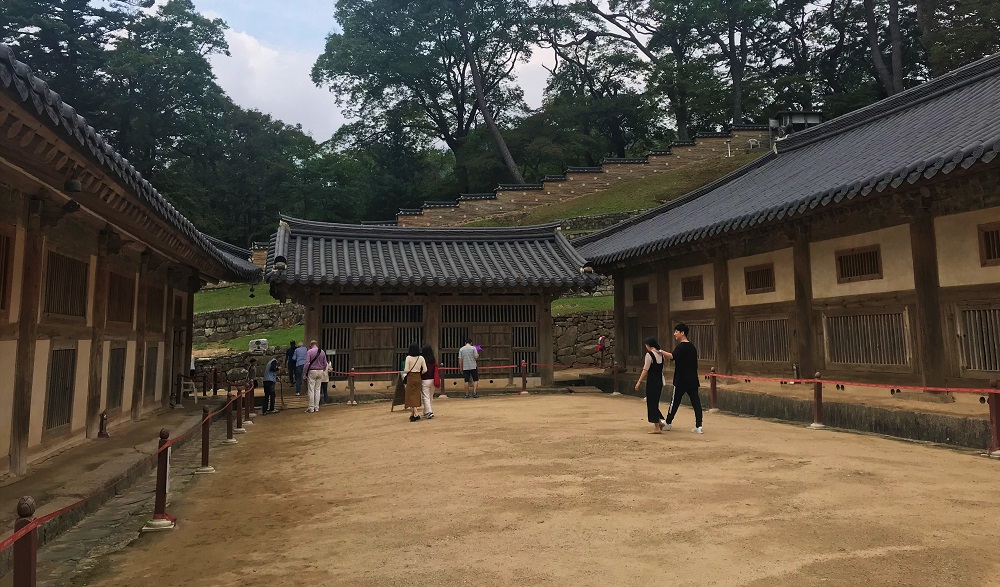
The Tripitaka Koreana is a Korean collection of the Tripitaka, or the Buddhist scriptures. Carved into 81,258 woodblocks with no known mistakes, corrections or errors, it’s a genuinely amazing achievement. Dating from the 13th century, the woodblocks have over 52 million characters, neatly organised into nearly 1500 titles and 6568 volumes of Hansa script. Interestingly, it’s also the most complete version of the Buddhist scriptures that’s survived through into the present day. The Japanese, Chinese and Taiwanese Tripitakas are based on this Korean text.
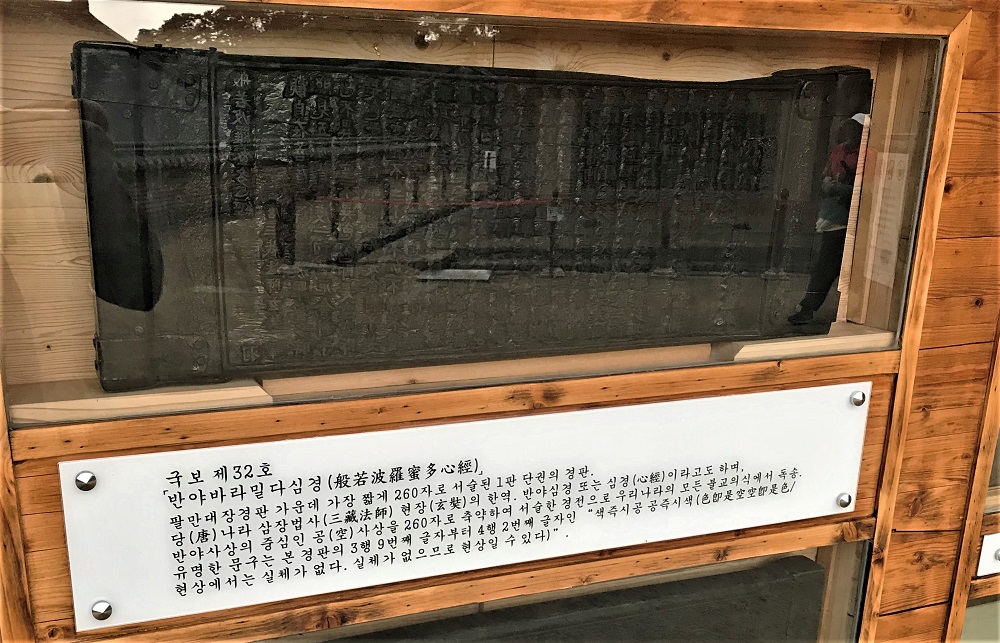
For conservation reasons you can’t physically interact with the Tripitaka, but you can explore around the storage buildings of the Janggyeong Panjeon which are almost as impressive. The buildings were designed specifically to house and preserve the Tripitaka. Careful attention was paid to every detail. The windows are open but off-set, allowing air to circulate while preventing moisture from building up. The shelves pack the woodblocks together tightly so that bugs and termites can’t get in and cause damage. According to our guide, in the 2000s the Korean government began designing a modern facility to house the Tripitaka with all the usual bells and whistles. But their tests kept showing that the woodblocks had generally worse outcomes in the modern facility than in the 13th century one! So they elected to leave them in place, under care of the Haeinsa Temple monks.
Haeinsa Temple Stay Program – Day 1
We arrived at Haeinsa Temple in the early afternoon after a bus ride from Daegu and then a long uphill walk from the bus stop. We spent a couple of hours wandering around the temple grounds before our program officially started at 4pm.
From 4pm we had a 30 minute session on temple manners with our guide, such as when to speak, how to walk, what to wear, and various other rules that we’d need to obey during our time at the monastery. We also had a brief period for settling into our rooms – clean and modern, though quite spartan. One room per person of course!
First stop was dinner at 5:30pm in the main dining hall, taken in complete silence. The fare was bland vegetarian food which wasn’t my first choice, but it’s all part of the experience. Plain white rice, boiled cabbage, kim chi, mushy white bean stew, and a spicy cabbage dish. It had been impressed on us that you must eat everything you take from the buffet, so I was a bit selective in places but overall it was fine.
Immediately after dinner was a drumming session, as the monks pounded away relentlessly on an enormous drum, three metres in diameter. This ritual lasted around 15 minutes, followed by a bell-ringing ritual that lasted another 10 minutes. Once these had been done we headed for the modern library, where a monk taught us the basics of Buddhist meditation. Various positions, chants, and so on. One that I particularly enjoyed was a walking meditation, where you walked slow laps around the edge of the temple.
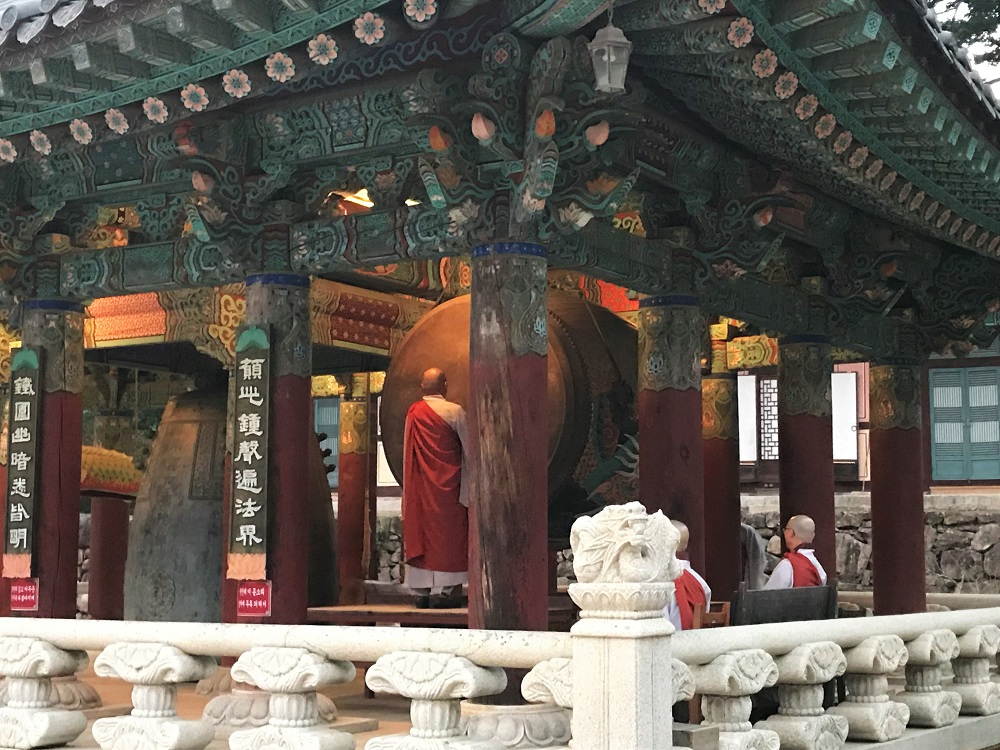
Meditation training completed, we headed back to the dormitory for our 9pm lights-out. Happy to report the bed was very comfortable, and much better than the “wooden mat on the floor” that I’d been fearing!
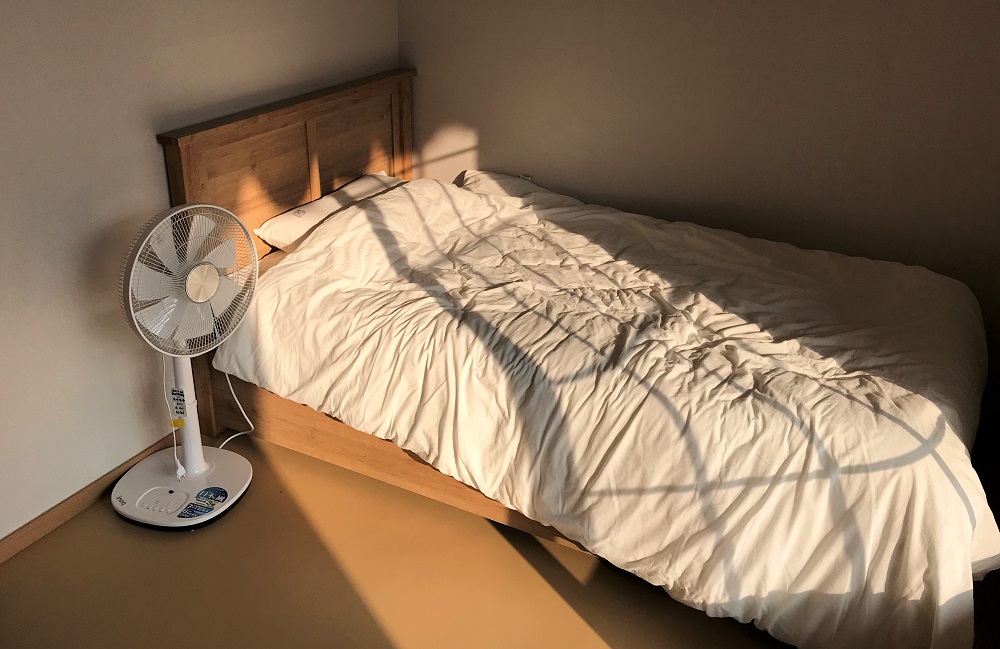
Haiensa Temple Stay Program – Day 2
Wake-up call was at 3:50am, slightly earlier than my usual time! First stop for the day was another drumming ritual at 4:07am precisely, before morning meditation in the main temple at 4:30am. Despite the hour, the sight of all the monks sitting in the Lotus position, still as statues, is one that I’m unlikely to forget. We joined them in their meditation, though I struggled with the 10 Prostrations before Buddha – essentially 10 burpees! Not quite what I signed up for.
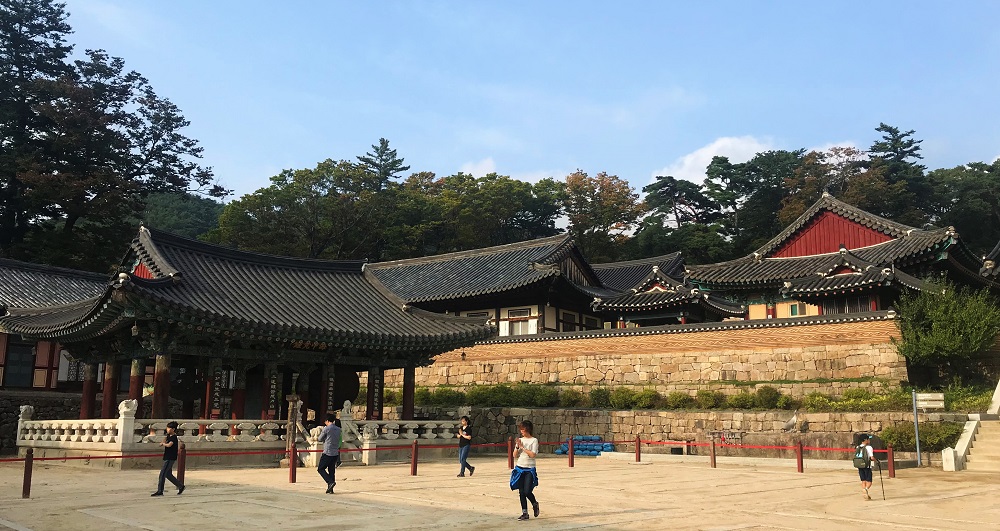
We had a bit of spare time after meditation, followed by another silent trip to breakfast. Thankfully the food was much tastier – soups and the like. After breakfast we had a temple tour with a monk, showing us various areas of the whole monastery and points of interest. The highlight was actually going inside the Janggyeong Panjeon buildings that I mentioned earlier. It was only a quick walkthrough and we couldn’t interact with the Tripitaka, but still incredible to see up close.
The morning was heating up, and it was time for our last two activities. First was woodblock printing, where we learned how the Tripitaka woodblocks became books. During this activity we got to print our own Heart Sutra, one of the most revered of Buddhist prayers. And our final activity was tea and conversation with a monk. It was run by the same monk who’d guided our meditation the previous evening, and we enjoyed interacting with her in a less formal setting. She had a lot of interesting stories and lessons from her life at the temple, and we thoroughly enjoyed the session. It really was a perfect way to end!
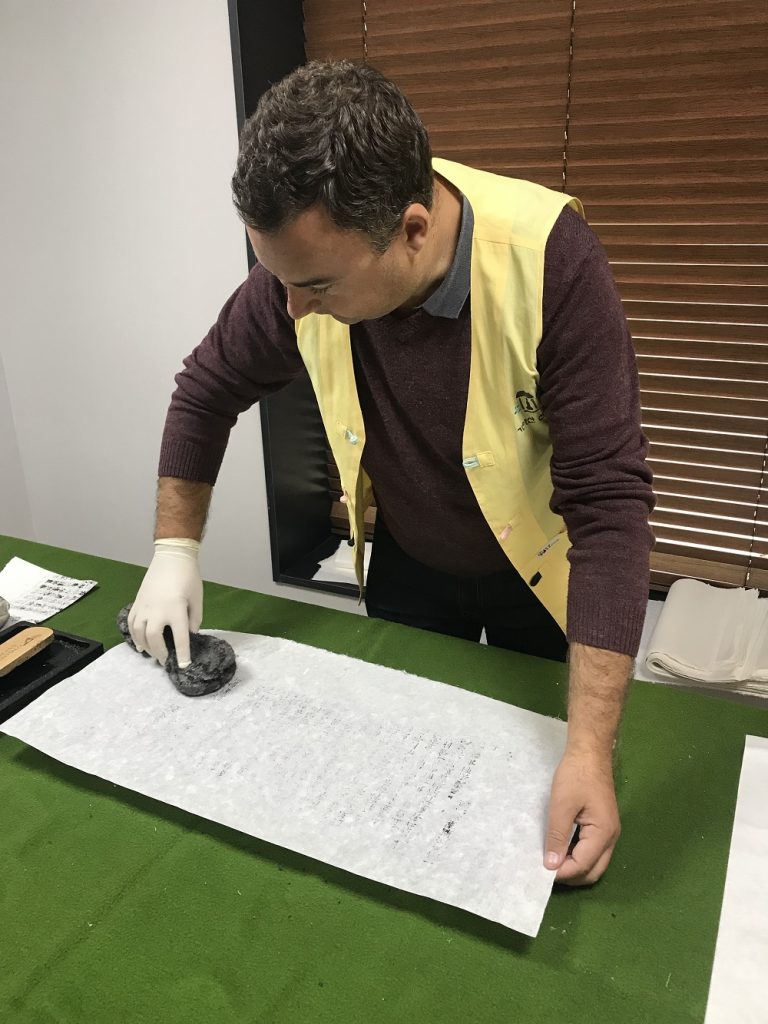
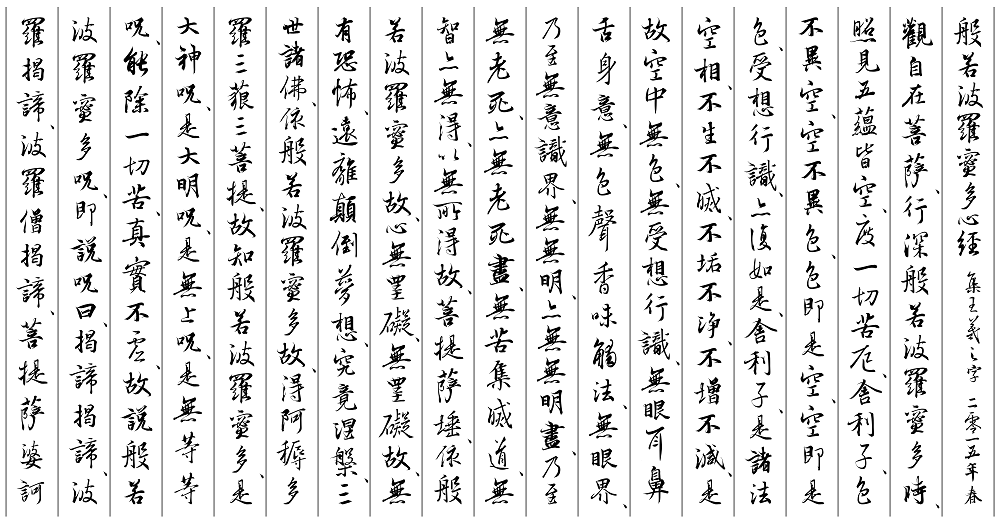
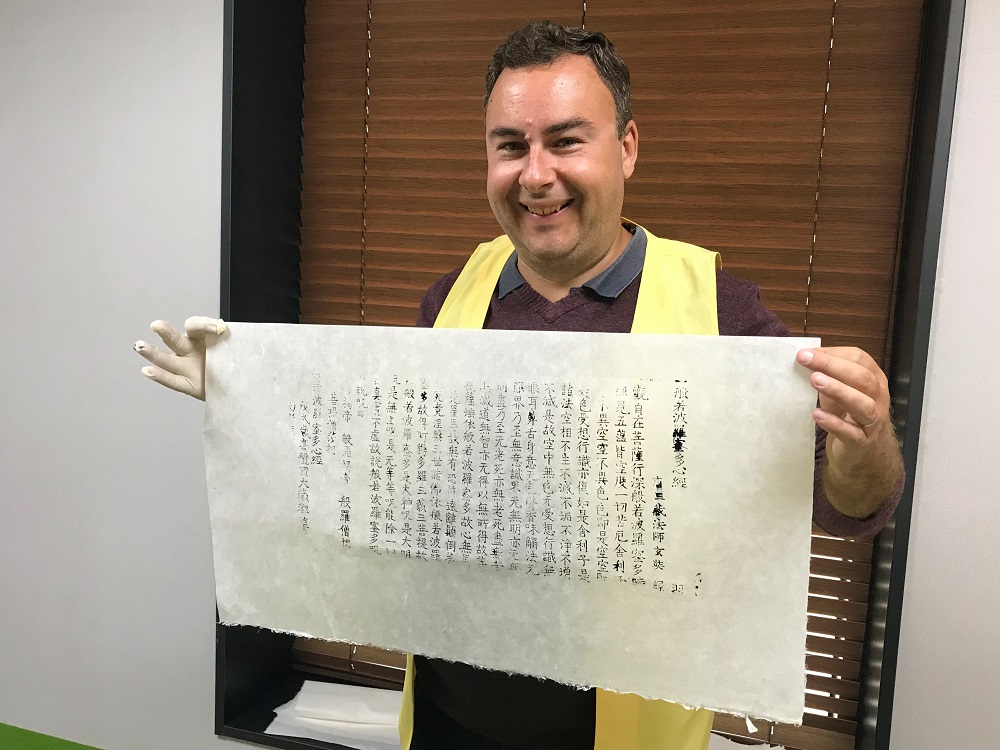
How Can I Stay at Haeinsa Temple?
Bookings must be done in advance via the Temple Stay website. Book early, as capacity is limited. Note the Haeinsa Temple Stay program only runs on Friday nights, so you might need to reshuffle your holiday dates! Price is 100,000 KRW (~$82 USD) per person, with discounts for students and children.
As with most places in densely-populated South Korea, gaining access to Haeinsa Temple isn’t especially tricky. There’s a detailed list of bus and train options located here.
You don’t need to bring anything special with you! Just an open mind, and your regular travelling clothes. Flip-flops and sleeveless t-shirts aren’t recommended.
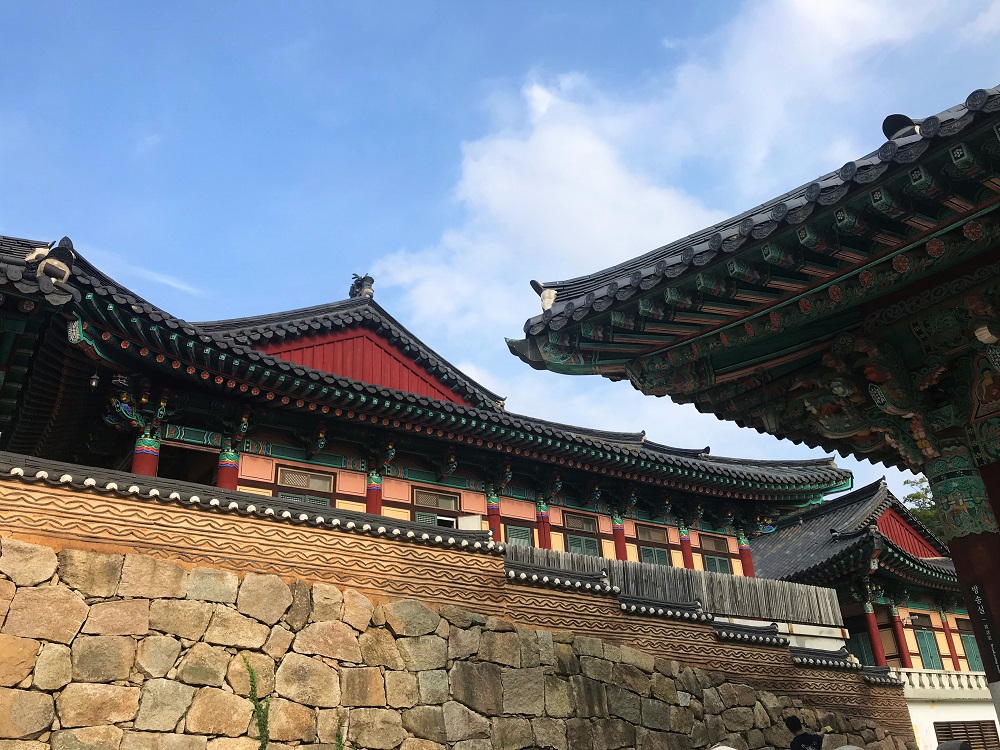
Conclusion
The Haeinsa Temple Stay was one of the most enjoyable things we did during our fortnight in South Korea. The Tripitaka Koreana is a genuine masterpiece of world literature, so seeing it is a real thrill. Not to mention being part of an ancient monastic community! Temple stays are also possible at other World Heritage Sites like Mount Athos in Greece, and Bulgaria’s Rila Monastery. I can’t wait to stay at some of those as well!
While you’re here, be sure to check out some of our other articles. We’ve covered The 7 Best UNESCO World Heritage Gardens, World Heritage Sites of the South West USA, and the World Heritage Sites of Delhi. And as always, don’t forget to Subscribe to our YouTube channel! Be sure to hit that notification button to ensure you never miss a video.
